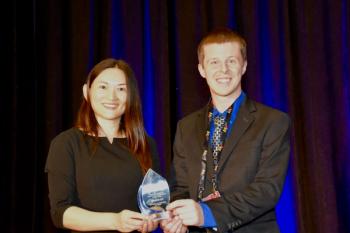
Machine Learning and FT-IR Spectroscopy Team Up to Detect Sawdust Adulteration in Coriander Powder
Key Takeaways
- Machine learning-assisted FT-IR spectroscopy effectively detects sawdust adulteration in coriander powder, with artificial neural networks showing superior predictive performance.
- Preprocessing techniques, such as Savitzky–Golay smoothing, significantly enhance model performance, achieving R² values exceeding 0.92 and 0.96 in validation tests.
Researchers at the National Institute of Technology Rourkela have developed a highly accurate machine learning-assisted FT-IR spectroscopy method to detect and quantify sawdust adulteration in coriander powder, offering a fast and scalable solution to enhance food safety and authenticity.
Food adulteration remains a concern for consumers, and food manufacturers are adopting new quality control measures to ensure that the best food products are entering the market. A recent study published in Food Chemistry explores this topic, focusing on coriander powder. This study, which was led by Sushil Kumar Singh of the National Institute of Technology Rourkela, presented a new method for detecting sawdust adulteration in coriander powder using machine learning (ML)-assisted Fourier transform infrared (FT-IR) spectroscopy.
What is coriander powder?
Coriander powder is made from the dried fruits of the coriander plant (2). It is mostly grown from southern Europe to southwestern Asia (2). This spice is known for its unique flavor, nutritional properties, and aroma (1,2). Because of its popularity globally, it is also susceptible to food fraud. Its coloration, similar to sawdust, has resulted in some suppliers mixing sawdust into coriander powder before selling it, which raises health concerns as sawdust is non-edible and may carry harmful residues (1).
What did the researchers do in their study?
In their study, the researchers devised a new method that they hoped would be able to detect and quantify sawdust in coriander powder. The process began with sourcing five kilograms of whole coriander seeds from a local market in Rourkela, Odisha, and five kilograms of sawdust from Indian Elm bark obtained from a nearby carpentry shop (1). The coriander seeds and sawdust were both grounded separately before being mixed at 28 different levels to account for variation.
Then, the researchers combined FT-IR spectroscopy with ML algorithms to interpret complex patterns in the spectral data collected. The team tested several predictive models, including linear regression (LR), decision tree (DT), support vector regression (SVR), and artificial neural networks (ANN) (1).
Out of all these models, the ANN model performed the best. Because ANN was able to capture non-linear relationships between adulteration levels and spectral features, the researchers could reliably predict subtle levels of sawdust adulteration (1).
What are the key takeaways from this study?
Several key takeaways can be noted about this study. First, the study showed that model performance can often be dictated by the preprocessing of the spectral data. The original data set and the Savitzky–Golay smoothed data set outperformed other preprocessing techniques, achieving R² values exceeding 0.92 and 0.96, respectively, in validation tests (1). This means the models could explain more than 92% of the variability in adulteration levels (1).
Another important takeaway is that this model could be applied to other food products outside of coriander powder and be used to detect more food adulterants. By systematically detailing the steps of data collection, preprocessing, feature engineering, and model validation, the researchers suggest that extending their approach to other food products vulnerable to fraud would yield positive results (1).
What does this study mean for detecting food adulteration moving forward?
This study demonstrates that ML-assisted FT-IR spectroscopy can be a rapid, cost-effective, and scalable alternative method for routine quality checks in spice production and supply chains.
This approach not only helps to ensure the authenticity of coriander powder, but it also opens the door to quantifying various types of adulterants in a range of food products. This study also demonstrates how advanced data processing and predictive modeling can tackle persistent food fraud challenges. Going forward, it is expected that machine learning algorithms will continue to be routinely used in food analysis because of its scalability.
References
- Goyal, R.; Singha, P.; Singh, S. K. Machine Learning-assisted Fourier Transform Infrared Spectroscopy to Predict Adulteration in Coriander Powder. Food Chem. 2025, 477, 143502. DOI:
10.1016/j.foodchem.2025.143502 - Grimsrud, D. What is Coriander? Simply Recipes. Available at:
https://www.simplyrecipes.com/what-is-coriander-5198043 (accessed 2025-08-12).
Newsletter
Get essential updates on the latest spectroscopy technologies, regulatory standards, and best practices—subscribe today to Spectroscopy.




